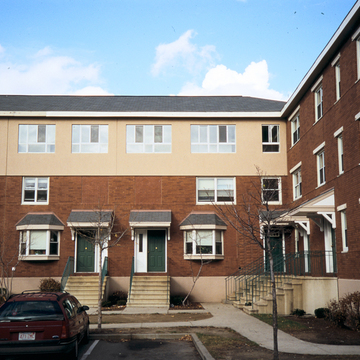Originally the largest product of post–World War II public housing in Boston, this project, located too far from urban transportation, became a center of crime that resulted in physical deterioration. Several factors led to the complete overhaul of the area—the nearby location of the University of Massachusetts, Boston (DR5), and the John F. Kennedy Library and Museum (DR3), a subway station, a renewed appreciation of the waterfront site, and the prosperity of the mideighties. Funded by public and private capital, state loans, federal housing subsidies, and HUD grants, the new master plan's goal was to create a community of mixed-income population in 883 market-rate apartments alongside subsidized
You are here
Harbor Point Apartments
1954, M. A. Dyer Co. 1988, Goody, Clancy and Associates. 1 Harbor Point Blvd.
If SAH Archipedia has been useful to you, please consider supporting it.
SAH Archipedia tells the story of the United States through its buildings, landscapes, and cities. This freely available resource empowers the public with authoritative knowledge that deepens their understanding and appreciation of the built environment. But the Society of Architectural Historians, which created SAH Archipedia with University of Virginia Press, needs your support to maintain the high-caliber research, writing, photography, cartography, editing, design, and programming that make SAH Archipedia a trusted online resource available to all who value the history of place, heritage tourism, and learning.


